Itineraries: which one to choose?
The Southern Egyptian Red Sea is one of the most beloved destinations for European divers: a true aquarium close at hand. However, only a liveaboard trip allows you to reach its most remote and spectacular sites. There are two classic itineraries: the BDE, a trilogy comprising Brothers Islands, Daedalus Reef, and Elphinstone Reef, and the deep south route known as St. John’s.
BDE: icons of the Red Sea
The BDE itinerary, named after the initials of the three remote sites it visits (Brothers Islands, Daedalus Reef, and Elphinstone Reef), is perfect for those seeking the thrill of encounters with sharks and pelagic fish. Due to frequent currents and rough seas, this route is ideal for experienced divers. However, the chance to spot large pelagics near walls rich in colorful corals makes this experience extremely rewarding.
Below is an example of a typical itinerary with details on the most significant dives.
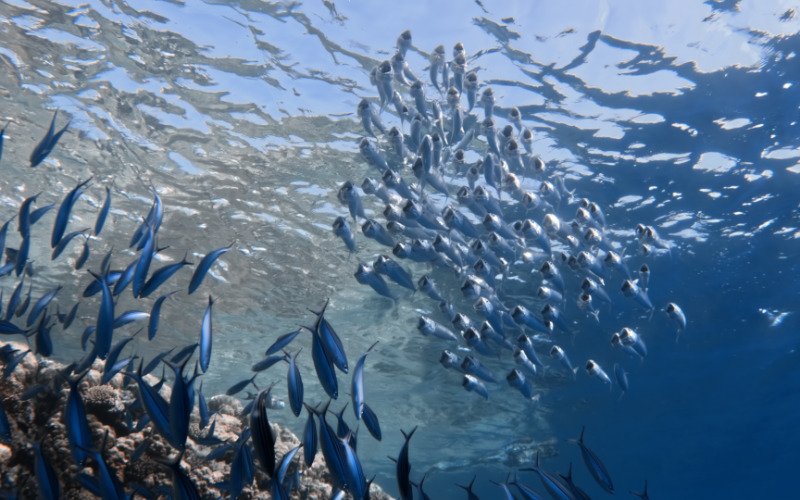
Hurghada
If the cruise starts from Hurghada, once check-in and the initial briefing are complete, the check dive is conducted at one of the countless spots in the area. Gota Abu Ramada, Small Giftun, and Shaab Sabina are among my favorites: shallow depths, crystal clear water, thriving corals, and an abundance of colorful fish. It is the perfect opportunity to warm up the GoPro and verify all settings ahead of the upcoming dives, which promise to be even more exciting. I have found the reefs in Hurghada to be vastly improved compared to the 90s: the ban on anchoring (albeit belated) and increased environmental protection are yielding evident results.

Brothers Islands
After the check dive, we sail for about 6 hours towards the Brothers Islands, an archipelago offering spectacular dives and extraordinary marine biodiversity.
The larger island, Big Brother, located to the north, is famous for vertical walls covered in colorful soft corals, shipwrecks, and above all, sharks: oceanic whitetips, gray reef sharks, and often hammerheads. Dives here generally include a descent onto the South Plateau, a prime spot for observing thresher sharks, and a dive on one of the two wrecks, Numidia (pictured)or Aida, depending on current intensity.
Small Brother lies about a mile to the south. Here, in addition to beautiful coral walls, you can admire pinnacles and areas teeming with life. At this site too, thresher sharks can be spotted on the South Plateau, while the North Plateau is renowned for the presence of gray reef sharks.
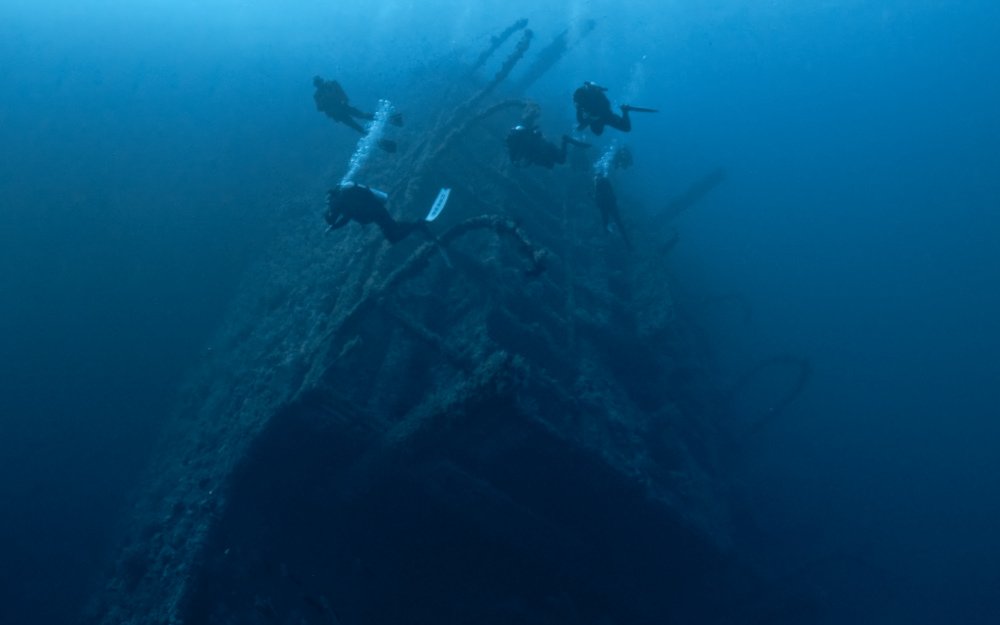

Daedalus Reef
Since overnight stays at the Brothers have been banned for some years, we head south immediately after the third dive. It is the longest leg of the cruise (about 10 hours), but fortunately, we sail at night.
Upon waking, we face a breathtaking scene: Daedalus Reef, a majestic coral atoll with a small artificial island at its center, dominated by an iconic lighthouse built in 1863.
We generally stay at Daedalus for three days, completing six dives across four different spots: the South Plateau, near the boat moorings, known for oceanic whitetips, silky sharks, and barracudas; the East and West walls, rich in splendid corals and pelagic encounters; and the famous North Point, territory of hammerhead sharks and oceanic mantas.
Elphinstone Reef
Reluctantly leaving Daedalus Reef behind, we set course for Elphinstone Reef, reaching it in about 6 hours for the final dives. This offshore reef, approximately 400 meters long, features sheer drop-offs plunging more than 100 meters. Ranked among the top ten dive sites in the world, Elphinstone offers spectacular soft coral formations and is the ideal place to spot large predators: oceanic whitetips, hammerheads, and sometimes thresher sharks. The schedule usually includes two dives: one at the North Point and one at the South Point.R
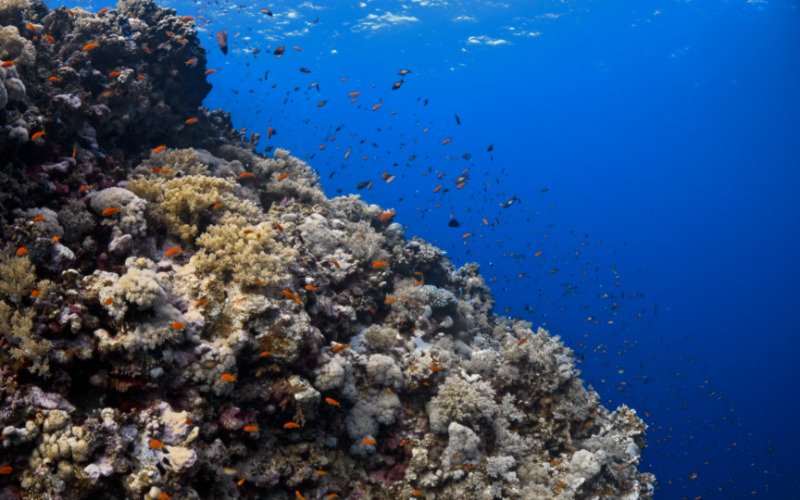

Port Ghalib
The final afternoon is dedicated to relaxation, moored at Port Ghalib, famous for its immense artificial saltwater lagoon (the largest in Africa). After the ritual of rinsing the gear, it is the perfect time for a stroll along the marina: a chance to admire the yachts, enjoy the evening lights, and browse through the shops and bazaars of the waterfront. The day ends in celebration at the Divino Restaurant, with great pizza and dancing to mark the end of the trip.
St. John's: vibrant corals and marine life
The St. John’s itinerary pushes to the deep south of Egypt, touching the Sudanese border. It is a journey into a remote and uncrowded area, famous for its extraordinary variety of coral formations and explosive biodiversity: a unique opportunity to explore pristine environments.
Despite the very high naturalistic quality, the dives are generally shallow and less demanding than other routes, making them suitable even for divers with basic experience.
Sea conditions are usually calmer compared to the BDE route, although in summer, without wind, the heat can be intense. Finally, the reef morphology offers highly protected evening anchorages, ensuring peaceful nights and ideal conditions for spectacular night dives.
Abu Dabab
The cruise sets sail from Port Ghalib, a short distance from Marsa Alam. Once boarding procedures and the briefing are complete, the check dive typically takes place in the Abu Dabbab area, about an hour’s sail away, where conditions are generally calm and visibility is excellent.
My favorite spots here are Abu Dabbab II and III: spectacular coral gardens no deeper than 20 meters, featuring excellent visibility, vibrant pinnacles, and the almost guaranteed presence of hawksbill turtles.
A gentle yet visually rewarding start: the perfect context for fine-tuning your video gear and testing color rendering in shallow water, ensuring your setup is flawless before heading to the deep south.
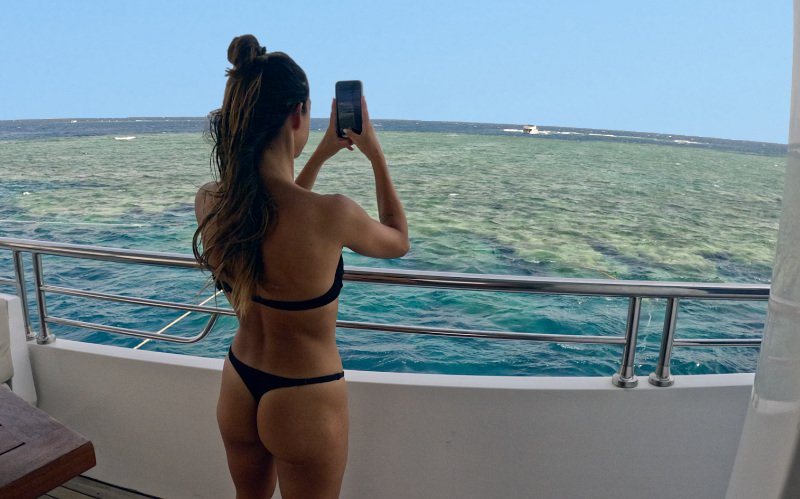

Fury Shoals
The second day is dedicated to the Fury Shoals, a vast complex of about twenty reefs offering a variety of spectacular sites. Among the most notable are Sha’ab Claudio, characterized by a maze of swim-through caves where evocative light rays filter through, and Abu Galawa Soraya, a ring-shaped reef sheltering an incredible coral garden within.
To the northeast of the system lies my favorite spot: Sha’ab Maksour. It is a reef about 1.5 km long with vertical walls and a structure very similar to Elphinstone. Dives focus on the South Point and North Point, both ideal for encountering turtles, reef sharks, and with a bit of luck, hammerhead sharks.
Finally, at the southern tip stands Sha’ab Sataya, famous for the large colony of resident dolphins inhabiting the natural lagoon: a unique opportunity for snorkeling and capturing breathtaking footage, always with strict respect for these splendid animals.
St. John's
After rounding the Ras Banas peninsula, guardian of the ancient port of Berenice, we reach St. John’s, located near the Sudanese border. This area includes about ten reefs rising from a deep plateau (60-80 meters) with a unique morphology: some break the surface, while others remain submerged, topping out just a few meters below the blue. These are the so-called “Habili”, the Arabic term for these hidden pinnacles.
Must-dive sites include Habili Ali, famous for encounters with large pelagics like hammerheads and silvertips (Albimarginatus), Habili Gaafar, Dangerous Reef, Gota Kebir, and the spectacular St. John’s Caves. These settings offer not just exceptional diving, but also unique opportunities to capture top-tier video content.
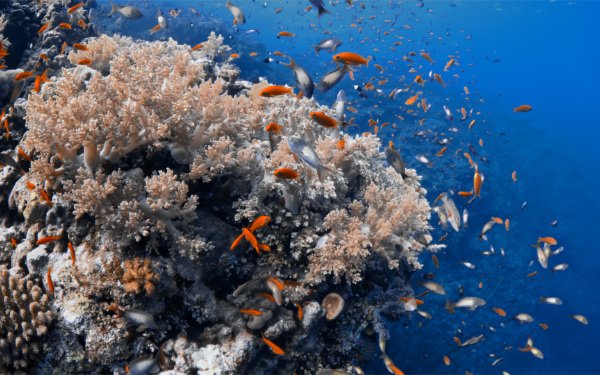
Elphinstone Reef
The long journey back north culminates at the unmistakable silhouette of Elphinstone Reef. It is the worthy epilogue to the cruise: an oceanic reef exposed to currents that draws pelagic life like a magnet. Here, the diving changes pace, becoming pure adrenaline: we drift along walls that plunge into the infinite blue, hovering over the plateaus at either end where predators often patrol. Beyond the hammerheads in the deep, Elphinstone is famous for close encounters with the Oceanic Whitetip (Longimanus), which frequently accompanies divers right during their safety stop under the boat.
Port Ghalib
Returning to Port Ghalib marks the end of diving and the start of relaxation. Here, home to Africa’s largest saltwater lagoon, we dedicate the afternoon to gear maintenance and rest.
The evening continues with a pleasant stroll among the marina’s yachts, browsing through illuminated bazaars, before the grand finale: a gathering at the Divino Restaur to enjoy a pizza and dance in celebration of this adventure’s conclusion.
